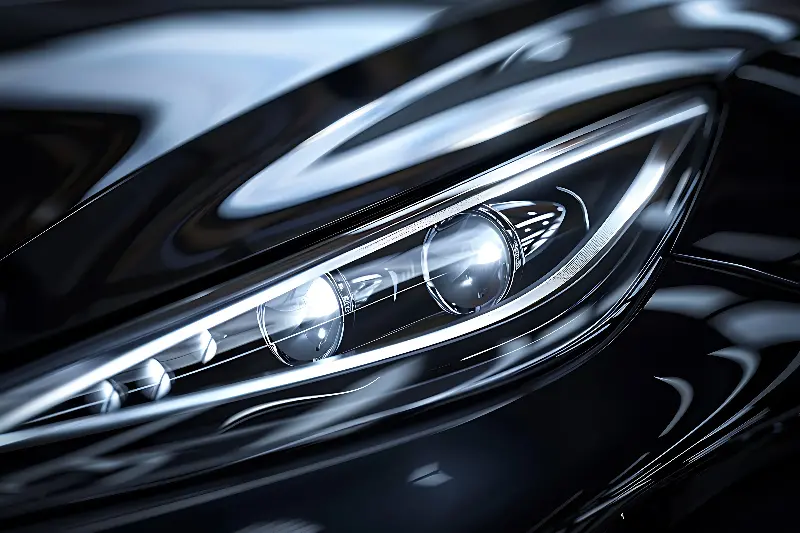For many drivers, the world of car safety brings to mind familiar features like seatbelts, airbags, and anti-lock braking systems. While these tried-and-true essentials have saved countless lives over decades, automotive technology continues to advance at a breathtaking pace. Hidden just below the surface of the showroom gloss, modern vehicles now offer lesser-known yet truly life-saving features that often go unnoticed—sometimes, until the very moment they’re needed most.

In the hustle and bustle of everyday driving, it’s easy to overlook some of these unsung heroes of road safety. They may not always come with dazzling advertising or obvious controls on your dashboard, but their impact in reducing injuries and fatalities is profound. Curious about what you might be missing out on? Here are five overlooked car safety features that could make all the difference the next time you or your loved ones hit the road.
Automatic Emergency Braking: Your Silent Co-Pilot
One of the quiet champions of modern vehicle safety is automatic emergency braking, often abbreviated as AEB. This feature uses a series of sensors—like radar, cameras, or lidar—to monitor the road ahead for obstacles or sudden stops. If the technology detects an imminent collision and the driver hasn't taken action quickly enough, it will apply the brakes automatically.
Most drivers assume that they’ll always react in time, but real-world data challenges that confidence. From fatigue to distraction, countless variables can delay your reflexes by crucial milliseconds. Studies suggest that AEB can reduce rear-end collisions by over 50%, minimizing not only the risk of injury but also the severity of accidents when they do happen. Many premium models include it as standard now, but it’s wise to check if your current car has this invaluable feature—or consider it a must-have in your next vehicle.
Adaptive Headlights: Lighting the Way More Intelligently
When night falls, standard headlights can only illuminate so much of the road ahead. Adaptive headlights, however, are changing the way we drive after dark. Rather than remaining fixed in one direction, these lights pivot in response to your steering, vehicle speed, and sometimes even GPS data.
Imagine taking a winding mountain road: as you turn the wheel, your headlights trace the curve, dramatically boosting your visibility and your reaction time to unexpected hazards, animals, or sharp curves. Adaptive headlights can also automatically adjust their brightness to reduce glare for oncoming drivers, preventing temporary “blindness” that may otherwise lead to dangerous situations. If your daily commute sees you traveling at dusk or through rural areas, this often-overlooked feature might be your best defense against nighttime perils.

Blind Spot Monitoring: Eyes Where You Can’t See
Every driver, no matter how experienced, is susceptible to the dreaded blind spot—the tricky area just out of sight where another vehicle could be lurking. Blind spot monitoring systems use sensors to detect vehicles approaching those hidden zones, then alert you with a subtle visual or auditory cue.
Surprisingly, despite its proven track record in reducing lane-change accidents, blind spot monitoring isn’t universally recognized as essential. Yet, research has shown that this feature can bring down lane-changing accidents by nearly 14%, a statistic that could mean the difference between a normal morning commute and an unexpected sideswipe.
Especially useful in heavy traffic or on highways, blind spot monitoring is a feature that truly looks out for your interests, making those stressful merges and lane changes that much safer.
Collision Avoidance Side Airbags: Expanding Your Safety Net
Airbags have evolved significantly since their early days as front-only safety devices. Today, the inclusion of side airbags—sometimes specifically designed for collision avoidance and occupant protection—can make a monumental difference in side-impact crashes, which tend to be particularly dangerous due to the proximity of the striking object to the driver or passenger.
Some new vehicles now feature “curtain” airbags that extend along the length of the passenger cabin. In the event of a rollover or a T-bone collision, these deploy instantaneously, cushioning occupants from head injuries and distributing force across a wider area. Given that side-impact collisions are responsible for a significant portion of serious crash injuries and fatalities, having this extra buffer is a quiet but powerful guardian in your vehicle’s safety arsenal.

Driver Attention Monitoring Systems: A Friendly Nudge Toward Alertness
Even the most responsible drivers can suffer lapses in attention due to fatigue, distraction, or long hours on the highway. Enter driver attention monitoring systems, a subtle technological hand on your shoulder. These systems employ sensors, cameras, and algorithms to analyze your driving style, eye movements, and even steering patterns. If they detect signs of drowsiness or distraction—like wandering within the lane or slow reaction times—they’ll issue a gentle alert, urging you to take a break or refocus.
While it’s easy to believe that “it won’t happen to me,” drowsy driving accounts for thousands of crashes each year. Having a built-in electronic companion that never tires and always pays attention can offer the peace of mind every driver deserves, especially on long journeys or monotonous routes.
Whether you’re considering upgrading your ride or simply want to make the most of your current vehicle’s offerings, being informed about these overlooked safety features is a powerful step toward safer travels. As car technology moves forward, integrating these systems could mean the difference between a close call and a life-altering event.
Modern vehicle safety is all about the details you don’t always see. The best car features aren’t just about touchscreen luxury—they’re about smart protection you’ll hopefully never need to use. On your next drive, take a moment to appreciate the cutting-edge defenses working silently behind the scenes, and remember: sometimes it’s the features you overlook that truly keep you safe.
